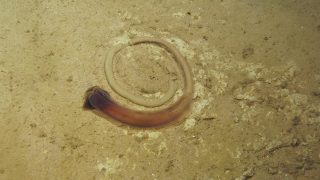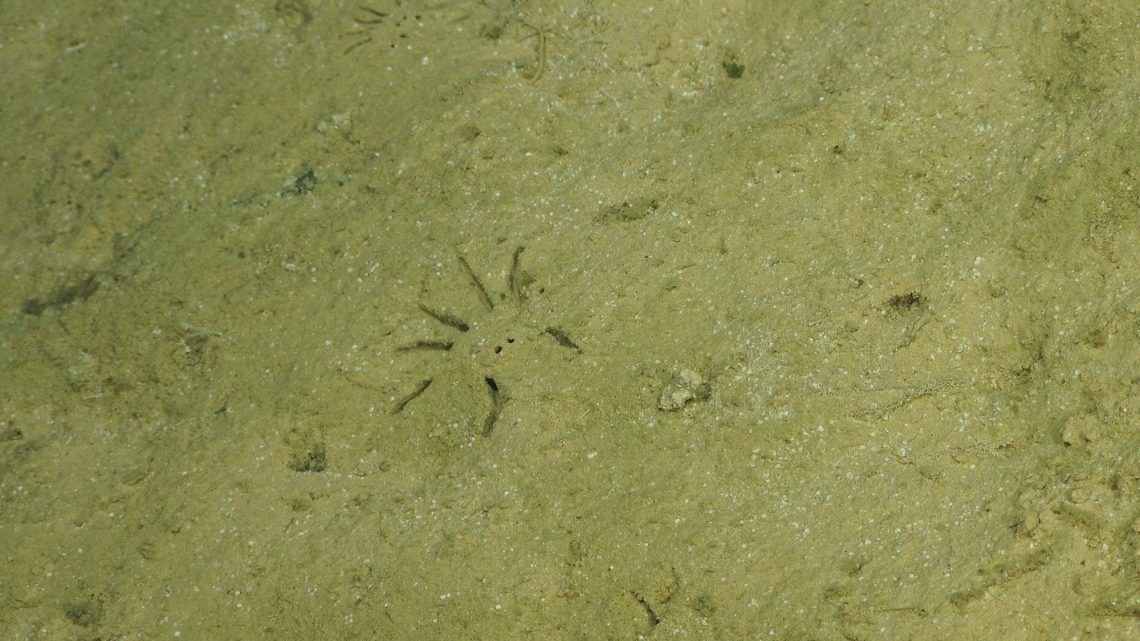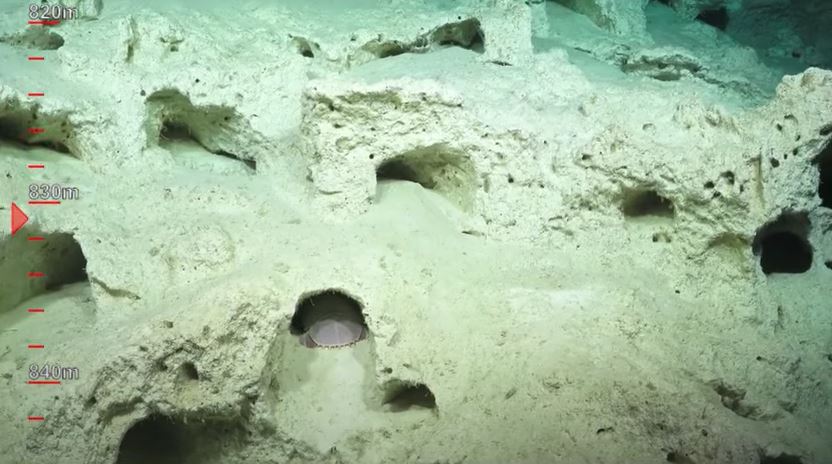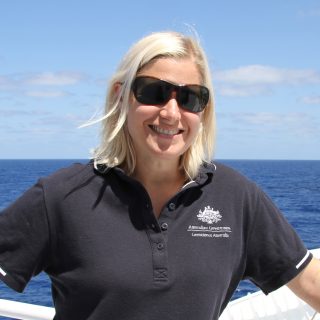While the ROV SuBastian glides above the seafloor, scientists and observers eagerly wait for the next fish, coral, or (particularly in the case of this survey) interesting rock to appear. In between there are often large expanses of seemingly barren sediment. Looking closely, however, we can often see a variety of markings in the sediment.

These are called Lebensspuren, German for ‘life traces’, and they give us an indication of organisms that may be nearby but not visible to our cameras. The appearance of Lebesspuren is as varied as the organisms that make them – chaotic scribbles are the trails of holothurians while neat spirals are the faecal casts of acorn worms. There are even some Lebensspuren that extend in complex honeycomb structures beneath the sediment (e.g. Paleodictyon).
Although we usually know what Lebesspuren types are formed by what organisms, some remain a mystery despite their prevalence. For example, a distinct type of Lebensspuren coined a spider trace has been found throughout the eastern Australian margin in 2007, and this same feature was seen again during the recent Ningaloo Canyons survey. We collected several spider traces and the surrounding sediment with a pushcore but found nothing alive in the sample and still have no idea what organism makes this structure!

If we are really lucky, sometimes we get to see the animals creating a previously mysterious Lebensspuren type. During a Visioning the Coral Sea survey, ROV SuBastian collected video of distinctive burrows carved into walls of consolidated sediment. Their origin was a mystery until just a few hours later when giant isopods were filmed inside them.

In much of the deep-sea, there is very little disturbance so these tracks and trails can persist for weeks and even months after their creation. So even though we may not be able to see the animals themselves, we can use the traces they leave behind to estimate biodiversity, compare regions, and characterise behaviour.

